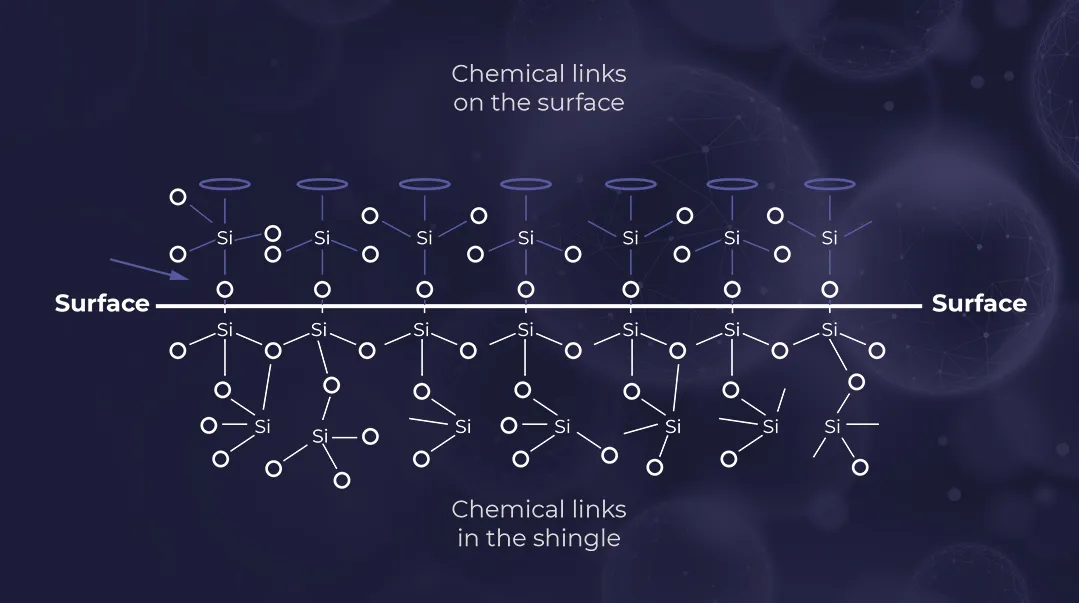The Science of Nanotechnology

The Science
About Nanotechnology

Technology
Nanotechnology is the science of engineering and technology at the nanoscale. As a reference point, the thickness of a sheet of paper is about 150,000 nanometers.
Nanometers
Ranging from 40 to 60 nanometers in size, the nanoparticles we use are infinitely microscopic. This is what allows them to penetrate materials to protect them from the inside.


Protective Layer
Unlike a coating or sealant that creates a protective layer on the surface, our nano-sealers act on the molecular structure of materials to modify and strengthen them. And the nanosilica particles are so small they allow the roof shingle to breathe.

Inside-Out Protection:
How GoNano Extends Roof Lifespan and Saves Money
The evolution of GoNano technology created a shift in how sealants are approached. A regular roof shingle is sealed with oil, filling up the space between shingles. GoNano modifies the molecular structure of asphalt shingles permanently. After application, a reaction occurs within each shingle. This reaction fuses both organic and inorganic material, creating new chemical links, called S1 particles. These S1 particles link shingle granules together, working from the inside out, creating a unified barrier on the roof against environmental strains and saves you money by extending the lifespan of your roof.
gonano technology
Nanosilica
Material
Similar to silica, an inorganic nanomaterial, composed of high silica density.
Manufactured
Synthetically created by precipitation, hydrothermal/solvothermal, or thermal reduction processes.
Performance
Modification occurs from pozzolanic reactivity (pore-filling).
Nanosilica is an inorganic nanomaterial, similar to silica, but it is characterized by high silica density (99%). It must be synthetically created through one of three processes: the precipitation pathway (silica reacts in a solvent through purification and dispersion), the hydrothermal/solvothermal pathway (silica goes through precipitation, high pressure and temperature conditions), or thermal reduction (silica is placed in temperatures of up to 1700°C to 2300°C). Once nanosilica is formed, its improved performance is attributed to its pozzolanic reactivity (the chemical reaction that occurs for pore-filing).
gonano classes
Roof Classes and Certifications
CLASS 1
Least resistant, can withstand at most a 1.25-inch steel ball test.
CLASS 2
Can withstand at most a 1.5-inch steel ball test.
CLASS 3
Can withstand at most a 1.75-inch steel ball test.
CLASS 4
Highest resistance, can withstand up to a 2-inch steel ball test.